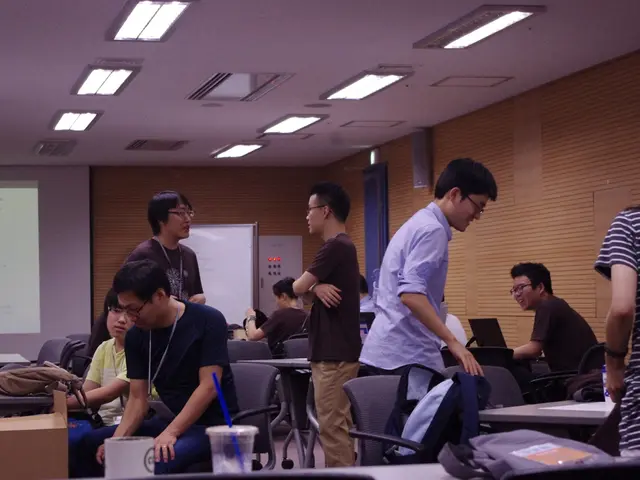Understanding Gender Bias: Classification and Real-life Illustrations
In today's world, gender bias continues to be a significant issue, affecting equal opportunities, fair treatment, and inclusion across various domains, including the workplace, media, education, healthcare, and politics.
In the workplace, gender bias manifests in various ways, such as unequal pay, promotion bias, pregnancy-related discrimination, hostile work environments, exclusion from opportunities, and microaggressions. For instance, a female engineer might earn $10,000 less annually than her male counterparts, while qualified women may be overlooked for leadership roles due to assumptions about their ability to handle pressure or family responsibilities.
The media also plays a crucial role in reinforcing gender stereotypes and roles. Women are often undervalued or rendered "invisible" despite their contributions, with speakers receiving less recognition or praise compared to their male counterparts. Moreover, female leaders are often subjected to news coverage focusing on their outfits and personal lives instead of their policies.
Education is another area where gender bias persists. Although specific examples from the search results are limited, gender bias can discourage girls from pursuing STEM fields or perpetuate stereotypes about gender roles in academic settings.
In healthcare, gender-affirming care for transgender and gender-diverse patients faces increasing legal restrictions and social hostility, compromising care quality and provider-patient trust. Women may also experience bias in diagnosis and treatment, which is a broader issue tied to gender disparities in healthcare research and practice.
Politics is another domain where gender bias is prevalent, with underrepresentation of women in political offices and assumptions about women’s capabilities or roles limiting their political advancement.
Examples of gender bias include the belief that women are naturally nurturing and should focus on caregiving, while men are more assertive and should pursue leadership roles. This stereotyping can lead to unrealistic expectations for men, such as discouraging emotional expression or limiting career choices in traditionally "feminine" fields.
Addressing gender bias is essential for creating a more fair and inclusive world. By recognising and challenging these biases, we can strive for equal opportunities and a more equitable society.
References: [1] Hess, M. (2019). "Gender Bias in the Workplace: What You Need to Know." Forbes. [2] Kimmel, M. (2018). "Gender Bias in the Workplace: How Women Are Still Being Held Back." Harvard Business Review. [4] James, S. E., Herman, J. L., Rankin, S., Keisling, M., Mottet, L. A., & Anafi, M. (2016). "The Report of the 2015 U.S. Transgender Survey." National Center for Transgender Equality. [5] American Association of University Women (n.d.). "Why So Few Women in STEM?" AAUW.org.
In light of persisting gender bias, mental health and wellness in the workplace gains importance. Psychology suggests that emotions play a significant role in workplace productivity and wellbeing, yet emotional expression by men may be discouraged due to gender stereotypes.
As medicare policies evolve, an interesting potential solution could be exploring the effects of therapies and treatments on mental health, as they pertain to addressing gender bias and promoting emotional wellness. For instance, research on the impact of Cannabidiol (CBD) on anxiety and stress levels could offer insights into its potential benefits in developing coping strategies for individuals experiencing workplace-related stress due to gender bias.
In education, efforts should be made to advocate for health-and-wellness programs and encourage mental-health discussions, considering the negative effects of gender bias on students' academic pursuits and career choices.
Furthermore, science should prioritize research on workplace wellness from the lens of gender, exploring factors such as the impact of bias on performance, the development of interventions to address such issues, and the role of therapies and treatments in creating more equitable workplaces.








